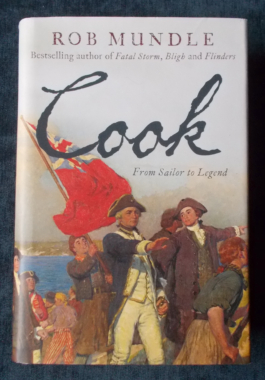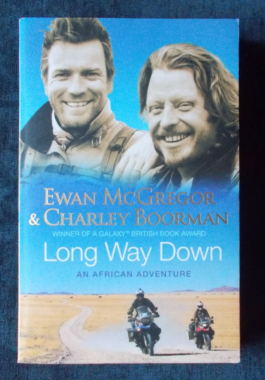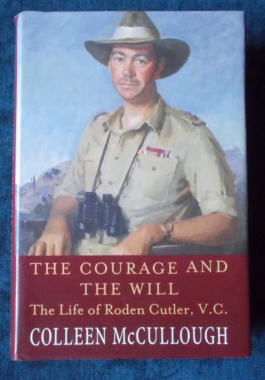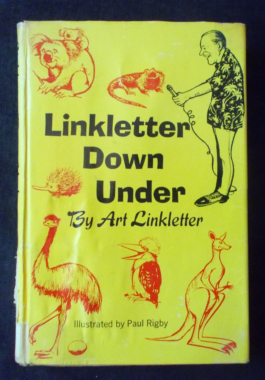-
 Over three remarkable voyages of discovery into the Pacific in the latter part of the eighteenth century, Cook unravelled the centuries-old mystery surrounding the existence of the great south land, Terra Australis Incognita; became the first explorer to circumnavigate New Zealand and prove it comprised two main islands; discovered the Hawaiian Islands and much more. Cook was a man who pursued a teenager's dream that evolved from a chance encounter in a small seafront village on the east coast of England ; a dream that became a reality and transported him to legendary status among all who mapped the world, on land and sea. Through the combination of hard-won skills as a seafarer, the talents of a self-taught navigator and surveyor, and an exceptional ability to lead and care for his men, Cook contributed to changing the shape of the world map more than anyone else. Illustrated with delicate colour sketches and maps.
Over three remarkable voyages of discovery into the Pacific in the latter part of the eighteenth century, Cook unravelled the centuries-old mystery surrounding the existence of the great south land, Terra Australis Incognita; became the first explorer to circumnavigate New Zealand and prove it comprised two main islands; discovered the Hawaiian Islands and much more. Cook was a man who pursued a teenager's dream that evolved from a chance encounter in a small seafront village on the east coast of England ; a dream that became a reality and transported him to legendary status among all who mapped the world, on land and sea. Through the combination of hard-won skills as a seafarer, the talents of a self-taught navigator and surveyor, and an exceptional ability to lead and care for his men, Cook contributed to changing the shape of the world map more than anyone else. Illustrated with delicate colour sketches and maps. -

 Looking after animals is no job for a man of sedentary disposition or sluggish mind. What action should one take, for example, when chimpanzees are having a pillow fight in the spare room, a fat lady sits on the macaw and the orang-utan enjoys being felt with the stethoscope so much she develops a phantom pregnancy so the treatment continues? Durrell also has a tale to tell of a trip to Sierra Leone to catch a Colobus and an expedition to Mexico to acquire a Volcano rabbit and a thick-billed parrot. And in true Durrell form, his odyssey is littered with hilarious mishaps and unexpected triumphs.
Looking after animals is no job for a man of sedentary disposition or sluggish mind. What action should one take, for example, when chimpanzees are having a pillow fight in the spare room, a fat lady sits on the macaw and the orang-utan enjoys being felt with the stethoscope so much she develops a phantom pregnancy so the treatment continues? Durrell also has a tale to tell of a trip to Sierra Leone to catch a Colobus and an expedition to Mexico to acquire a Volcano rabbit and a thick-billed parrot. And in true Durrell form, his odyssey is littered with hilarious mishaps and unexpected triumphs. -

 On May 27, 1940, Wing-Commander Basil Embry (later Air Chief Marshal and Commander, Allied Air Forces in Central Europe 1953-56), although appointed to a higher command, decided to lead his old squadron into battle for the last time. Within the hour he was shot down in France and found himself alone, unarmed and in uniform. Capture was inevitable. He was, in fact, captured three times: on one occasion breaking from a column of prisoners under the muzzle of a German machine-gun and on another fighting his way out, killing three Germans with a stolen rifle and then hiding in a manure heap for nearly six hours. The most amazing of all of Embry's exploits was the occasion on which, in the role of a fanatical member of the Irish Republican Army, he shook his fist under the nose of a German inquisitor, yelling hatred and abuse of Britain until his captors finally turned him loose to find his own way home - which, by sheer courage and wit, he did, to fight and fly again. He was awarded the D.S.O. and three bars; and the D.F.C.
On May 27, 1940, Wing-Commander Basil Embry (later Air Chief Marshal and Commander, Allied Air Forces in Central Europe 1953-56), although appointed to a higher command, decided to lead his old squadron into battle for the last time. Within the hour he was shot down in France and found himself alone, unarmed and in uniform. Capture was inevitable. He was, in fact, captured three times: on one occasion breaking from a column of prisoners under the muzzle of a German machine-gun and on another fighting his way out, killing three Germans with a stolen rifle and then hiding in a manure heap for nearly six hours. The most amazing of all of Embry's exploits was the occasion on which, in the role of a fanatical member of the Irish Republican Army, he shook his fist under the nose of a German inquisitor, yelling hatred and abuse of Britain until his captors finally turned him loose to find his own way home - which, by sheer courage and wit, he did, to fight and fly again. He was awarded the D.S.O. and three bars; and the D.F.C. -
 After their around the world trip in 2004, Ewan and Charley, inspired by their UNICEF visit to Africa, knew they had to return and experience this fantastic continent in more depth. And so began their 15,000 mile adventure, experiencing some of the toughest terrain, the most spectacular scenery, extreme temperatures and meeting some of the friendliest people. It was their hardest challenge to date - but their trademark humour and honesty, as always, made for a magical and wonder-filled journey. Illustrated with colour photographs.
After their around the world trip in 2004, Ewan and Charley, inspired by their UNICEF visit to Africa, knew they had to return and experience this fantastic continent in more depth. And so began their 15,000 mile adventure, experiencing some of the toughest terrain, the most spectacular scenery, extreme temperatures and meeting some of the friendliest people. It was their hardest challenge to date - but their trademark humour and honesty, as always, made for a magical and wonder-filled journey. Illustrated with colour photographs. -
 Roden Cutler's list of honours is long and impressive, but it is his sole decoration, the Victoria Cross, that marks him as a hero. Over 800,000 men and women served in the Australian armed forces during the Second World War, but only twenty were awarded the V.C. Here are is the vivid life and times of the young soldier with the dashing good looks, the laconic humour and dislike of pretension who came back from the war determined to continue to support his mother, but, having lost a leg, with no idea how to do so. Yet by the age of 29 he was the Australian High Commissioner to New Zealand and his future diplomatic career would include stints to Ceylon, Egypt during the Suez crisis of 1956, Pakistan and New York. In 1966 he was appointed Governor of New South Wales; during his 15 years in the office he shared with Captain Arthur Phillip and Lachlan Macquarie, he earned his own niche among them as the `people's governor'. Much loved, still remembered as a man equally at home in the company of royalty or trade unionists. His story is embedded in Australian history, and part of it. But it is also the story of a man who pulled himself up by his bootstraps to serve his country with courage and dignity in the face of all obstacles.
Roden Cutler's list of honours is long and impressive, but it is his sole decoration, the Victoria Cross, that marks him as a hero. Over 800,000 men and women served in the Australian armed forces during the Second World War, but only twenty were awarded the V.C. Here are is the vivid life and times of the young soldier with the dashing good looks, the laconic humour and dislike of pretension who came back from the war determined to continue to support his mother, but, having lost a leg, with no idea how to do so. Yet by the age of 29 he was the Australian High Commissioner to New Zealand and his future diplomatic career would include stints to Ceylon, Egypt during the Suez crisis of 1956, Pakistan and New York. In 1966 he was appointed Governor of New South Wales; during his 15 years in the office he shared with Captain Arthur Phillip and Lachlan Macquarie, he earned his own niche among them as the `people's governor'. Much loved, still remembered as a man equally at home in the company of royalty or trade unionists. His story is embedded in Australian history, and part of it. But it is also the story of a man who pulled himself up by his bootstraps to serve his country with courage and dignity in the face of all obstacles. -
 An extremely rare volume of the correspondence of Miska Hauser ( https://www.encyclopedia.com/arts/dictionaries-thesauruses-pictures-and-press-releases/hauser-miskaa) His impressions of the Colony, through letters to his brother Sigmund, detailing large, small and day-to-day observations and events were considered so lively and evidently written to entertain, that Sigmund, a sub editor for the newspaper Ost Deutche Post had them published regularly. The letters comprise a serial narrative, recounting the oddities and adventures of urban, goldfield and bush life from Sydney, Parramatta, Newcastle, Adelaide, Hobart, Ballarat, Bendigo and many other places.
An extremely rare volume of the correspondence of Miska Hauser ( https://www.encyclopedia.com/arts/dictionaries-thesauruses-pictures-and-press-releases/hauser-miskaa) His impressions of the Colony, through letters to his brother Sigmund, detailing large, small and day-to-day observations and events were considered so lively and evidently written to entertain, that Sigmund, a sub editor for the newspaper Ost Deutche Post had them published regularly. The letters comprise a serial narrative, recounting the oddities and adventures of urban, goldfield and bush life from Sydney, Parramatta, Newcastle, Adelaide, Hobart, Ballarat, Bendigo and many other places. -

Inferno! Hal Butler
$55.00A very interesting volume of accounts of great holocausts over the last one hundred years, with accounts from survivors, eyewitnesses, reporters and emergency service workers. Chapters: The Great Chicago Fire of 1871; the destruction of a tiny lumbering village in Peshtigo with a death toll of over 1,000; the Iroquois Theatre Fire, 1903; the burning of the paddle-wheel excursion boat, the General Slocum in 1904, with over 1,000 lives lost; the 1906 San Francisco earthquake destroyed not only homes and businesses, but utility services. When fires broke out, there was no water with which to fight them; The Triangle Shirtwaist Factory disaster, New York, 1911 when 146 employees died, many of whom had tried to leap from the windows to escape the flames; In Halifax, 1917, a fire on board the SS Mont Blanc - a French cargo ship - set off its load of high explosives, killing over 2,000 and injuring 9,000 more; In 1930, a candle ignited some oily rags left on the roof of the West Block of the Ohio State Penitentiary. Many inmates burned to death in their locked cells; The Hindenberg airship disaster of 1937; The Cocoanut Grove was Boston's top night spot - on November 28, 1942, a fire began which became the deadliest nightclub fire in history and the second-deadliest single-building fire in U.S. history, claiming 492 lives; July 6, 1944, in Hartford, Connecticut, saw a fire begin under the Big Top during an afternoon performance of the Ringling Bros. and Barnum & Bailey that would kill 160+ people; The Winecoff Hotel, Atlanta, was advertised as "absolutely fireproof" - but in December 1947, a conflagration broke out that would kill 119 people; In Galveston Bay, April 1947, a fire started on board the docked French-registered vessel SS Grandcamp, detonating her cargo of about 2,300 tons of ammonium nitrate, starting a chain reaction of fires and explosions in other ships and nearby oil-storage facilities, ultimately killing at least 581 people, including all but one member of the Texas City fire department; December 1, 1958 - a fire broke out at Our Lady of the Angels School in Chicago, killing 92 students and three nuns - a tragedy which caused over 16,000 schools across the U.S. to be brought up to safety standards before one year had passed. Illustrated with black and white photographs. -
 Art Linkletter was a Canadian-born American radio and television personality. In 1954, under the spell of Harold Holt's infectious evangelism for Australia as a land of opportunity, Linkletter and some celebrity friends formed a syndicate and prepared to go prospecting in the land where winter is summer and the soldiers wore wide brimmed hats turned up on one side. They were sure to meet koala bears and kangaroos and perhaps see some Stone-Age aboriginals wandering across the vast deserts, but beyond vague trivia, these 'babes' knew literally nothing about the 'land down under.' What they did meet was wild ducks and water buffalo who refused to give up their squatters' rights in the investment rice fields; plenty of sheep and plenty of Australians. A revealing, though dated, character sketch of Australia and its people. Illustrated by Paul Rigby.
Art Linkletter was a Canadian-born American radio and television personality. In 1954, under the spell of Harold Holt's infectious evangelism for Australia as a land of opportunity, Linkletter and some celebrity friends formed a syndicate and prepared to go prospecting in the land where winter is summer and the soldiers wore wide brimmed hats turned up on one side. They were sure to meet koala bears and kangaroos and perhaps see some Stone-Age aboriginals wandering across the vast deserts, but beyond vague trivia, these 'babes' knew literally nothing about the 'land down under.' What they did meet was wild ducks and water buffalo who refused to give up their squatters' rights in the investment rice fields; plenty of sheep and plenty of Australians. A revealing, though dated, character sketch of Australia and its people. Illustrated by Paul Rigby.



